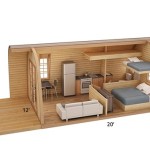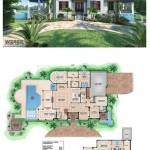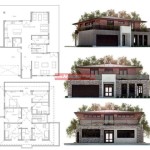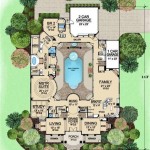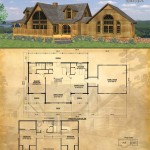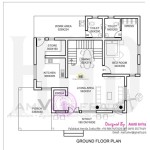DIY Outdoor Dog House Plans
Building a dog house provides a personalized shelter tailored to a dog's specific needs and preferences. With careful planning and execution, a DIY dog house can offer a comfortable and safe haven for a canine companion. This article presents information and key points to guide individuals through the process of planning and building a custom outdoor dog house.
Determining the Size and Style
The first step involves determining the appropriate size and style for the dog house. The structure should be large enough for the dog to comfortably stand, turn around, and lie down. Consider the dog's breed, size, and growth potential when selecting dimensions. Style options range from simple A-frame structures to more complex designs with insulation and added features.
Choosing Materials
Material selection is crucial for durability, weather resistance, and insulation. Common materials include wood, plastic, and metal. Wood offers a classic look and good insulation properties but requires regular maintenance. Plastic is durable and easy to clean but can be less insulating. Metal is robust and weather-resistant but can become hot in the sun and cold in the winter.
Gathering Tools and Equipment
Before commencing construction, gather all the necessary tools and equipment. This typically includes a saw, hammer, drill, screws, nails, measuring tape, level, and safety glasses. Having all necessary tools readily available will streamline the building process and prevent delays.
Creating a Blueprint or Sketch
A detailed blueprint or sketch is essential for guiding the construction process. The plan should include accurate measurements, material specifications, and a clear visual representation of the dog house's design. This allows for accurate material estimation and minimizes errors during the build.
Building the Floor and Frame
The floor should be elevated slightly off the ground to prevent moisture buildup and provide insulation. Construct a sturdy frame using pressure-treated lumber to resist rot and insect damage. Ensure square corners and level surfaces for stability and proper alignment of the walls and roof.
Constructing the Walls and Roof
Walls can be constructed from plywood, planks, or other suitable materials. Attach the walls securely to the frame using screws or nails. The roof can be sloped for water runoff and constructed from plywood, shingles, or other weather-resistant materials. Ensure proper overhang to protect the entrance from rain and snow.
Adding the Finishing Touches
Once the main structure is complete, add finishing touches such as a doorway, weather stripping, and paint or sealant. The doorway should be appropriately sized for the dog and can be fitted with a flap to further insulate the interior. Weather stripping around the door and any seams will help prevent drafts. Painting or sealing the exterior will protect the wood from the elements and enhance its appearance.
Insulating the Dog House (Optional)
For added comfort in extreme temperatures, insulation can be installed within the walls and roof. Suitable insulation materials include rigid foam insulation boards or fiberglass insulation. Properly installed insulation will help keep the dog house warm in the winter and cool in the summer.
Placement and Maintenance
Choose a suitable location for the dog house that offers some shade and protection from the elements. Ensure the area is well-drained to prevent water accumulation around the structure. Regular maintenance, such as cleaning, repainting, and checking for damage, will help prolong the life of the dog house and maintain a comfortable environment for the dog.
Key Considerations for Design and Construction
Several key considerations should be kept in mind throughout the design and construction process. These include:
- Ventilation: Ensure adequate ventilation to prevent moisture buildup and maintain fresh air circulation.
- Drainage: Elevate the floor and ensure proper drainage around the dog house to prevent water accumulation.
- Safety: Use non-toxic materials and smooth out any sharp edges or corners to ensure the dog's safety.
Customizing the Dog House
Personalizing the dog house with custom features can enhance its functionality and aesthetic appeal. Consider adding a porch, a ramp, or decorative elements to create a unique and inviting space for the dog. These customizations can be tailored to the dog's specific needs and preferences.
Consulting Resources and Seeking Advice
Numerous online resources and DIY guides offer detailed instructions and plans for building dog houses. Consulting these resources can provide valuable insights and inspiration. Seeking advice from experienced builders or carpenters can also be beneficial, especially for those with limited construction experience. These individuals can offer guidance on material selection, construction techniques, and troubleshooting potential challenges.

13 Diy Doghouse Plans And Ideas The House Of Wood
:strip_icc()/IMG_2589-5a202f1c7d4be800191a3845.jpg?strip=all)
14 Free Diy Dog House Plans Anyone Can Build

8x12 Dog Kennel Plans 2 Stall Shelter

Diy Dog House Plans Double Kennel Large Outdoor Israel

14 Diy Dog Houses How To Build A House Plans Blueprints
:strip_icc()/Beautiful-Pallet-Dog-House-with-Veranda-1-5a202f90494ec90037893a82.jpg?strip=all)
14 Free Diy Dog House Plans Anyone Can Build

Large Dog House Plans Free Construct101

Diy Dog House Plans Outdoor Easy For Winter Cardboard With Pallets Fauxsho Org Homemade

36 Free Diy Dog House Plans Ideas For Your Furry Friend

Dog House Ideas The Home Depot

